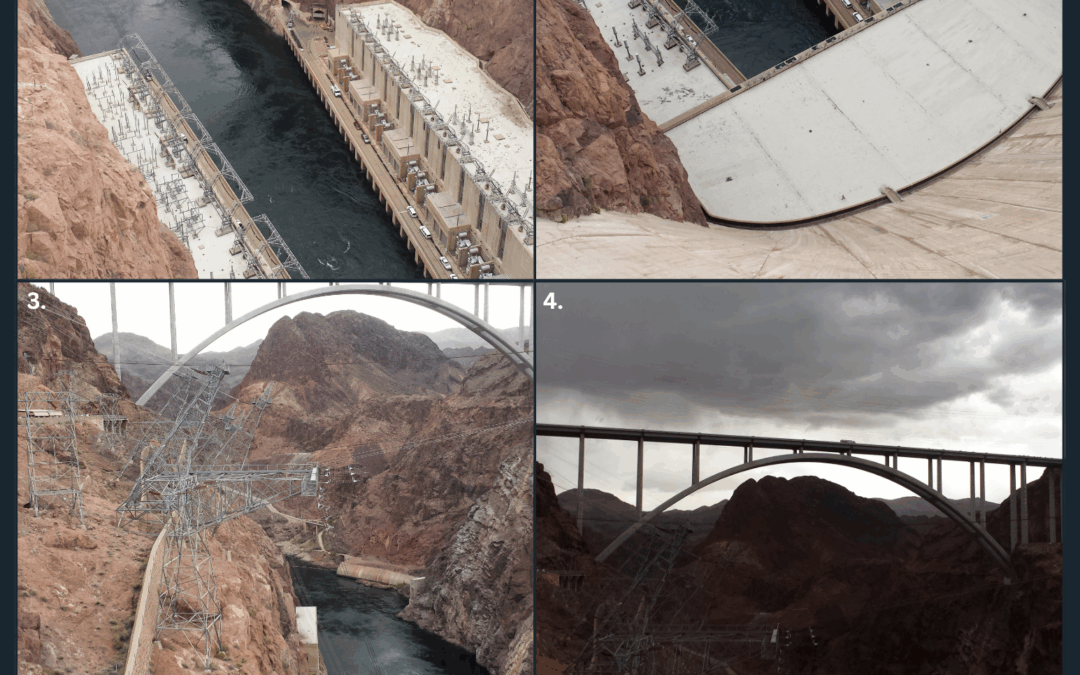Building Memories (BM) uses personal experiences and relates them to topics of importance to building.
This BM explores visiting Las Vegas and the Hoover Dam
Las Vegas is not a place I would want to live, but I truly enjoy visiting. Of course, there’s the Strip (which we’ll explore in a future “Building Memories” or possibly in “Building Futures”), but the city offers more than casinos and shows. The people-watching is world-class, the entertainment fantastic, and the food abundant. Step a few blocks—or miles—outside town, and you’re surrounded by stunning natural landscapes.
In 2014, we spent a day exploring Lake Mead, the reservoir formed by Hoover Dam, and made a short visit to the dam itself. Lake Mead’s water levels have fluctuated dramatically over the years: in 1983, it reached a historic high of 1,226 feet (about 373.7 m), while in 2022 it dropped to a historic low of 1,040 feet (about 317 m), a decrease of 186 feet. Its current volume is 9,166,512 acre-feet, down 63% from the 24,794,377 acre-feet recorded at its peak in 1983. For reference, one acre-foot contains 325,851 gallons of water. With an average American using 82 gallons per day (29,930 gallons/year), Lake Mead at its current level could supply the roughly 25 million people it serves for approximately four years.
Hoover Dam itself has an extraordinary history. Completed in 1936, it began providing electricity that today generates 3.3 TWh per year, serving about 1.3 million people and 500,000 homes. The original winning bid for construction was $45 million from a consortium called Six Companies. Remarkably, the final construction cost came in at $49 million—less than a 10% overrun, almost unheard of in today’s marketplace. The power plant and generators added $71 million, bringing the total project cost to $140 million. The entire investment, including interest, was fully repaid by 1987, meaning the infrastructure has provided net positive value for over 34 years.
That is the kind of infrastructure investment I would like to see more of in the coming years: well-planned, effectively executed, and delivering long-term societal benefits.
Photo 1: Outlet side of Hoover Dam
Photo 2: Neighboring Bridge
Photo 3: One Large Electrical Distribution Grid
Photo 4: Concrete Wall of Hoover Dam (Exit side)
